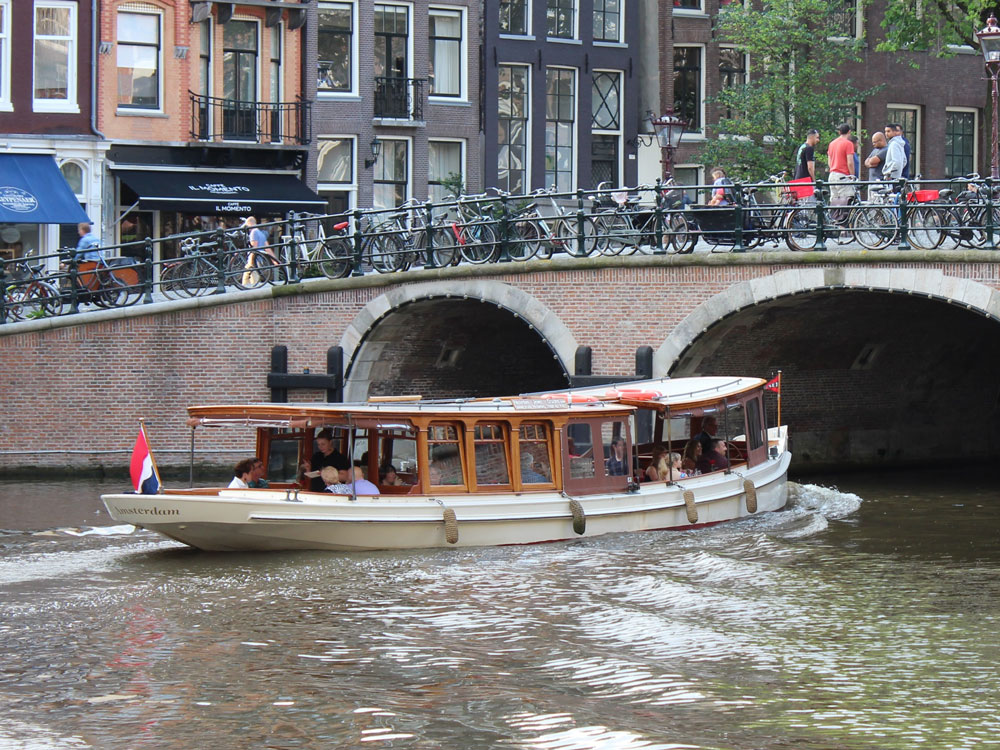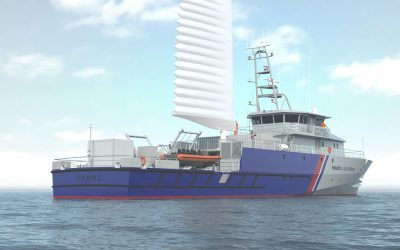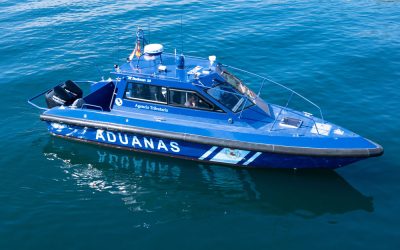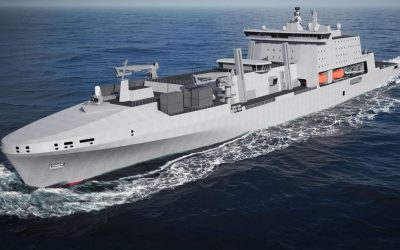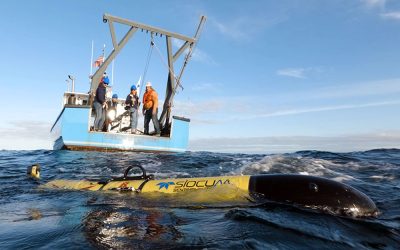Visitors to Amsterdam will now be able to enjoy fine dining on the water free of smoke and noise, as the relaunched floating restaurant Henry Schmitz resumes operations, following an internal overhaul and conversion to electric power.
The 16.7m x 3.7m saloon boat, originally built in the early 1900s and now operated by Amsterdam Jewel Cruises, has been equipped with an electric motor and battery for zero-emissions dinner cruises on the city’s canals. The boat’s March relaunch appeared to be well-timed: 1 April saw the introduction of new emissions rules for Amsterdam’s inner-city waterways, effectively banning diesel or petrol boats within its canal network – although some exemptions exist for commercial boats with older permits.
Prior to its powertrain overhaul, Henry Schmitz had been powered by a marinised version of an old IVECO Alfo truck diesel engine. The refit, carried out at Shipyard Wed. Brouwer in Zaandam, saw this diesel replaced by an Deep Blue 50i electric motor and a Deep Blue Battery 40, both supplied by e-propulsion specialist Torqeedo. The shipyard removed the diesel and tank, while Torqeedo partner Kenco handled the electric installation and wiring.
Torqeedo tells The Naval Architect that shipwright Martijn Scheerman particularly deserves credit for artfully removing the boat’s wooden superstructure to enable the powertrain swap-out, thus “maintaining the grandeur of the original details”.
With its current engine and battery combo, Henry Schmitz’s weight is now estimated at 28tonnes. The boat can offer dinner cruises for up to 20 guests, accompanied by a captain/skipper and one to two hosts. “There’s a fairly big, copper bar right in the middle, and all tables carry two to three couverts [the plates, cutlery and bread laid out for guests] max, to keep it cosy and intimate,” Torqeedo says. Amsterdam Jewel Cruises adds that the boat will only lay out eight tables max, to achieve the same intimate effect.
The Deep Blue Battery 40 is rated approximately 40kWh and supplies the power required for both the e-motor and the boat’s galley. The battery type was developed to withstand harsh marine environments, with an IP67 waterproof rating and a rugged design, reflecting Torqeedo’s range of maritime applications, including installations aboard powerboats, workboats, water taxis and small yachts.
In terms of performance, “typically, canal cruises through Amsterdam take a leisurely pace – about 5knots or so”, Torqeedo says. “The canals are narrow and congested, and there are lots of things to see. On a typical trip, the guests will come aboard for a welcoming drink at 17:00 and then cruise around until 22:30-23:00 for dinner with a view.” Henry Schmitz usually sails daily, with passenger bookings taken a month or so in advance.
Torqeedo adds that a typical day’s sailing uses no more than 20% of the battery’s charge. The boat is docked overnight for charging. On rare occasions, when the boat ventures farther – such as crossing the busy River IJ to pick up a private party, for example – it will run at full speed, reaching a hull speed of 10knots for about an hour. “Even so, by the end of the day, the boat usually retains 55% of its charge,” Torqeedo says.
Meanwhile, Amsterdam looks set to build on its drive to reduce noise and CO2 emissions: the city has pledged to install a total of 2,500 charging points for electric boats by 2030, meaning that the likes of Henry Schmitz will have easier access to electric power than ever before, regardless of their itineraries.
